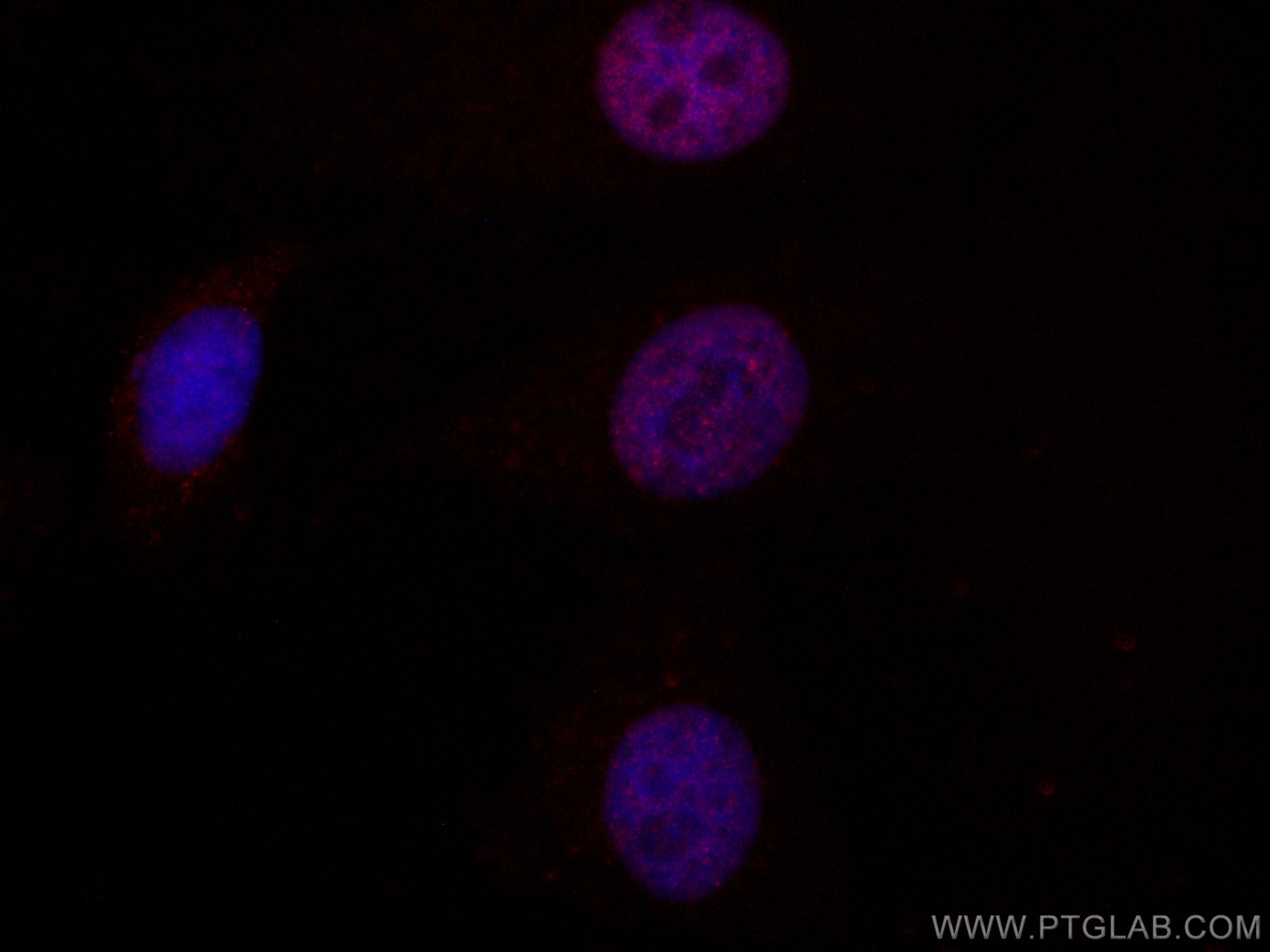验证数据展示
经过测试的应用
| Positive IF/ICC detected in | HeLa cells |
For other applications, we recommend the unconjugated version of this antibody, 60353-1-Ig
推荐稀释比
| 应用 | 推荐稀释比 |
|---|---|
| Immunofluorescence (IF)/ICC | IF/ICC : 1:50-1:500 |
| It is recommended that this reagent should be titrated in each testing system to obtain optimal results. | |
| Sample-dependent, Check data in validation data gallery. | |
产品信息
CL594-60353 targets MUM1 in IF/ICC applications and shows reactivity with human samples.
| 经测试应用 | IF/ICC Application Description |
| 经测试反应性 | human |
| 免疫原 | MUM1 fusion protein Ag3371 种属同源性预测 |
| 宿主/亚型 | Mouse / IgG2a |
| 抗体类别 | Monoclonal |
| 产品类型 | Antibody |
| 全称 | melanoma associated antigen (mutated) 1 |
| 别名 | EXPAND1, FLJ14868, FLJ22283, HSPC211, MUM 1, MUM1, Protein expandere |
| 计算分子量 | 18 kDa, 79 kDa |
| 观测分子量 | 78-80 kDa |
| GenBank蛋白编号 | BC008098 |
| 基因名称 | MUM1 |
| Gene ID (NCBI) | 84939 |
| RRID | AB_2919923 |
| 偶联类型 | CoraLite®594 Fluorescent Dye |
| 最大激发/发射波长 | 588 nm / 604 nm |
| 形式 | Liquid |
| 纯化方式 | Protein A purification |
| UNIPROT ID | Q2TAK8 |
| 储存缓冲液 | PBS with 50% glycerol, 0.05% Proclin300, 0.5% BSA , pH 7.3 |
| 储存条件 | Store at -20°C. Avoid exposure to light. Stable for one year after shipment. Aliquoting is unnecessary for -20oC storage. |
背景介绍
MUM1, also named as EXPAND1, is an architectural component of the chromatin, which in response to DNA damage serves as an accessory factor to promote cell survival. It is a 53BP1-associated DNA damage-responsive factor. MUM1/EXPAND1 is different to another protein IRF4/MUM1.
实验方案
| Product Specific Protocols | |
|---|---|
| IF protocol for CL594 MUM1 antibody CL594-60353 | Download protocol |
| Standard Protocols | |
|---|---|
| Click here to view our Standard Protocols |
